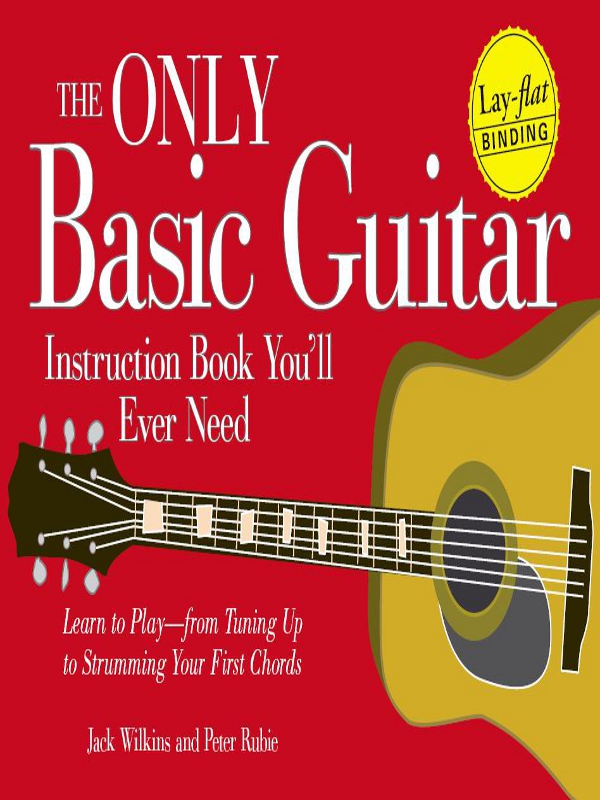
THE ONLY
Basic Guitar
Instruction Book You'll Ever Need
Learn to Playfrom Tuning Up to Strumming Your First Chords
Jack Wilkins and Peter Rubie

Adams Media
Avon, Massachusetts
Copyright 2006, F+W Media, Inc.
All rights reserved. This book, or parts thereof, may not be reproduced in any form without permission from the publisher; exceptions are made for brief excerpts used in published reviews. Contains portions of material adapted and abridged from The Everything Guitar Book by Jack Wilkins and Peter Rubie, 2002, Adams Media Corporation.
Published by Adams Media, a division of F+W Media, Inc., 57 Littlefeld Street, Avon, MA 02322. U.S.A.
www.adamsmedia.com
ISBN 13: 978-1-59337-379-5
ISBN 10: 1-59337-379-1
Printed in Canada. J I H G F E D C B A
Library of Congress Cataloging-in-Publication Data available from publisher.
This publication is designed to provide accurate and authoritative information with regard to the subject matter covered. It is sold with the understanding that the publisher is not engaged in rendering legal, accounting, or other professional advice. If legal advice or other expert assistance is required, the services of a competent professional person should be sought.
From a Declaration of Principles jointly adopted by a Committee of the American Bar Association and a Committee of Publishers and Associations
Many of the designations used by manufacturers and sellers to distinguish their products are claimed as trademarks. Where those designations appear in this book and Adams Media was aware of a trademark claim, the designations have been printed with initial capital letters.
Photographs courtesy of Peter Abru. Illustrations by Barry Littman.
This book is available at quantity discounts for bulk purchases.
For information, please call 1-800-289-0963.
CONTENTS
Introduction
A GUITAR can be many different things. It can be electric, or acoustic, or even electro-acoustic. It can be bluesy, classical, jazzy, folky baroque, or just plain heavy. It can be big enough to fill a football stadium (if, say, Eric Clapton is playing it) or small enough to fill the circle around a campfire. A guitar can be loud enough to make your ears ring for hours afterward, or quiet enough to get a child to go to sleep.
In a similar way, an aspiring guitarist can be many people. He could be a beginning songwriter looking to get in touch with his inner poet, or maybe a longtime heavy metal fan trying to stay in touch with her inner head-banger. Someone may take up the guitar to play for her friends, or for that dreamed-of stadium crowdor maybe just to play for himself, to prove that he could do it.
How then (you may ask), can this compact volume, The Only Basic Guitar Instruction Book You'll Ever Need, cover the many possibilities of this wondrous instrument, and help fulfill the varied goals of those people (yourself, for one) eager to play the guitar?
The answer is by carefully and thoroughly leading you through the basics, from What kind of guitar should I get? on up through How do I play a blues progression? In this book, you'll get all the guitar techniques, basic musical knowledge, and exercises and songs you need to progress from a beginner guitarist to an intermediate player who perhaps is on the way to even greater things.
Of course, this book itself is not enough to make you into an accomplished guitarist. There is that little matter of practicing (and more practicing and more practicing). And you should look to find a guitar teacher you feel comfortable with who can help keep you on the right path and enable you to be the best guitarist you can be. Don't forget to look for advice from fellow guitarists. In becoming a guitarist, you're joining a communitya far-flung and widely divergent one, to be sureof people who'd be happy to share their knowledge, and to help you along on the way to reaching your guitar-playing dreams.
 one
one
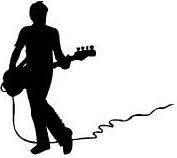
Understanding the Basics, and Buying the Right Guitar
DID YOU EVER SEE those boxes in a discount store that say My First Acoustic Guitar or My First Electric Guitar? To tell the truth, one of those probably shouldn't be your first acoustic or electric guitar. You need to find a guitar that is of good enough quality to make the hours of practicing worthwhile, but not so expensive that it breaks your budget. In this chapter, besides learning the basic guitar facts and terminology, you'll find out all you need to know in order to find a guitar that is the right one for you.
The Anatomy of a Guitar
In order to read and understand the rest of this book, talk knowledgeably with a guitar salesperson, or take guitar lessons, there are a number of terms and words you'll need to be familiar with. The most basic vocabulary to master is this: What are all those different parts of a guitar called? That's what we'll talk about first. (By the way, a number of these terms, and other bits of musical jargon, are defined in the .)
If you look at Figures 1-1 and 1-2, you'll see that a guitar has three basic parts: a body, a neck, and a head.
Fig. 1-1: The parts of an acoustic guitar
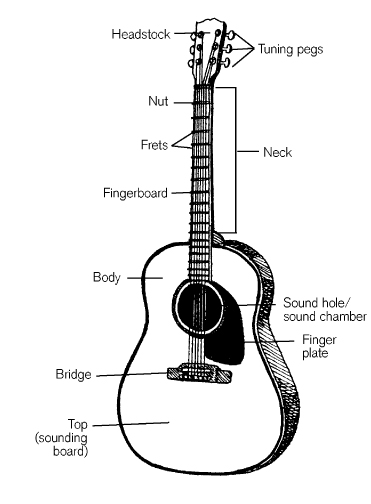
Fig. 1-2: The parts of an electric guitar
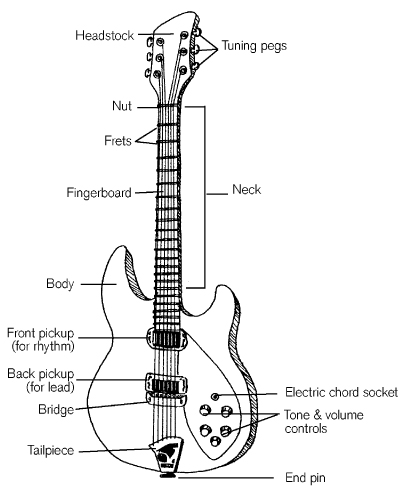
The Body
The body in an acoustic guitar is where the sound comes from. It consists of a top piece, which is a sounding board with a sound hole, and a back and sides, which contain the sound and make it resonate.
In a purely electric guitar, the body is made of a solid piece of wood to avoid feedback, or too much resonance or screeching when the sound is amplified. It also houses the electronic pickups (which convert the motion of the strings into an electronic signal that can be sent through an amplifier of some kind), and volume and tone controls (which vary the loudness and bass and treble frequencies of the signal). There is also a socket called an output jack, into which you insert a special plug or jack. The other end of the jack goes into a corresponding socket in an amplifier.
In addition, the body has a bridge, made from either wood or metal, which anchors the strings. There are also strap pins or posts, which you can use to attach a shoulder strap.
The Neck
The neck is usually fixed to the body by bolts or glue, or formed from the body in one piece. It often has a metal truss rod running through it to strengthen it and help adjust any slight warping or twisting. The neck has a flat piece of wood (usually mahogany or ebony) called the fingerboard or fretboard. The fingerboard is divided into sections called frets. These sections are marked off by pieces of wire set into the wood, called fretwire. By stopping a string in between the fretwiresthat is, in the middle of the fretthe frets determine the different pitches or notes you can make on each string. The strings run from the bridge, along the neck and across the nutwhich is a piece of wood, plastic, or metal at the top of the neck with slight grooves for each of the six stringsto the tuning pegs.
Next page
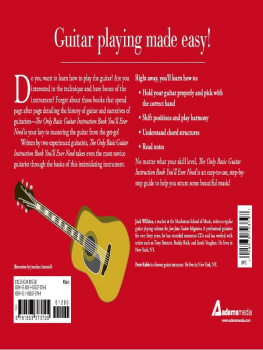



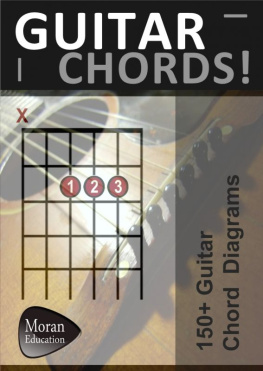

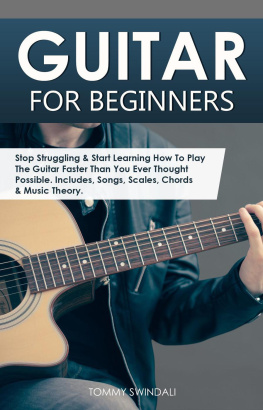
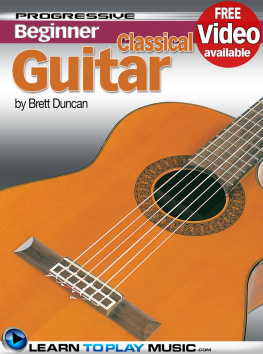
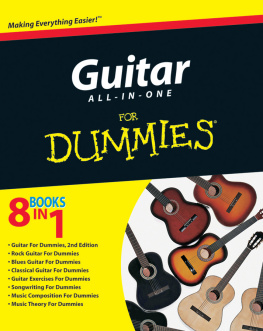

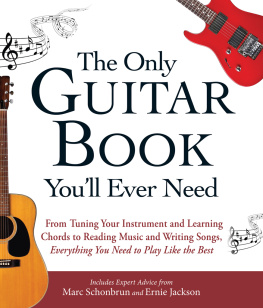
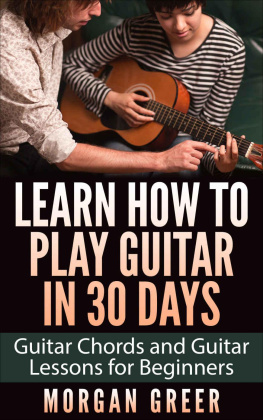


 one
one

